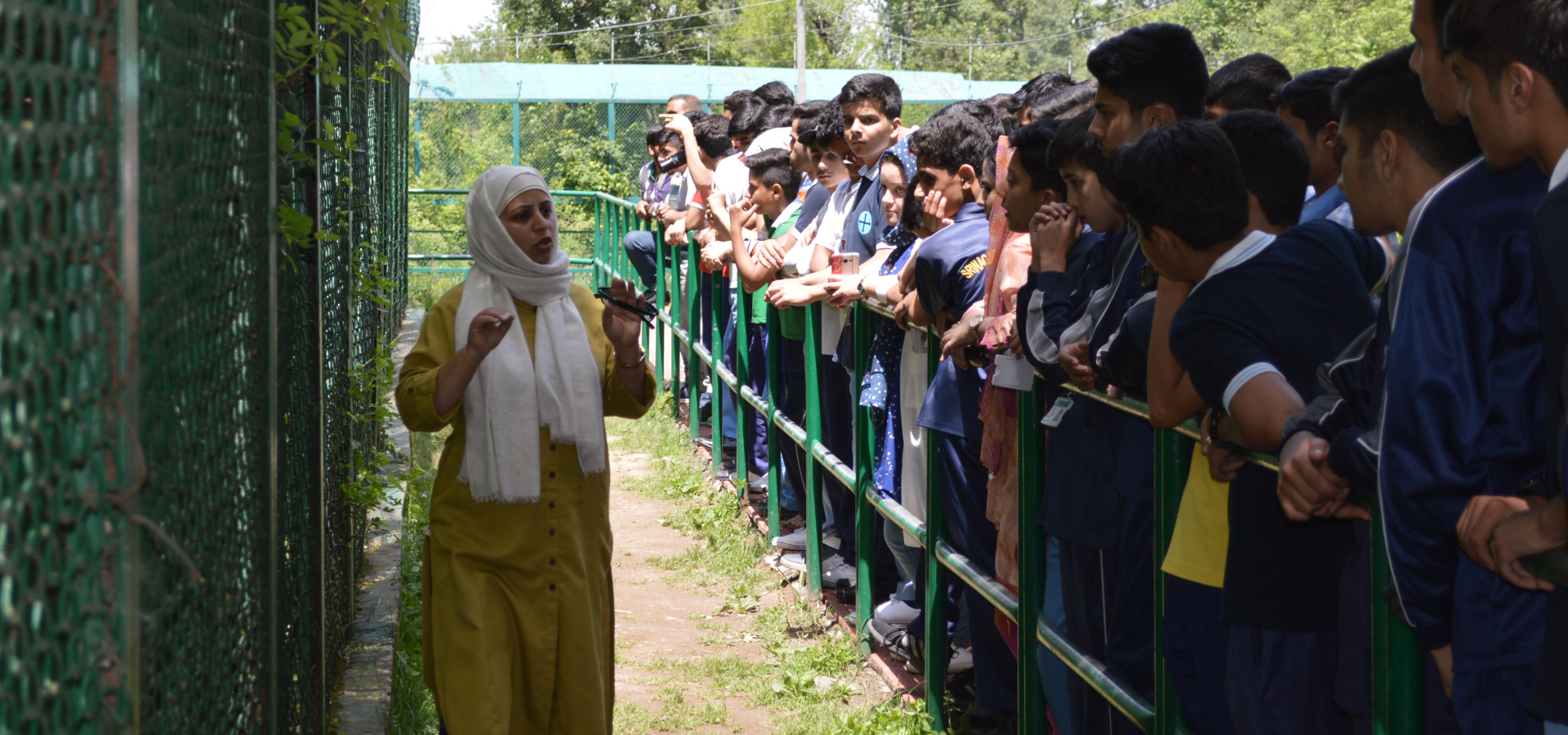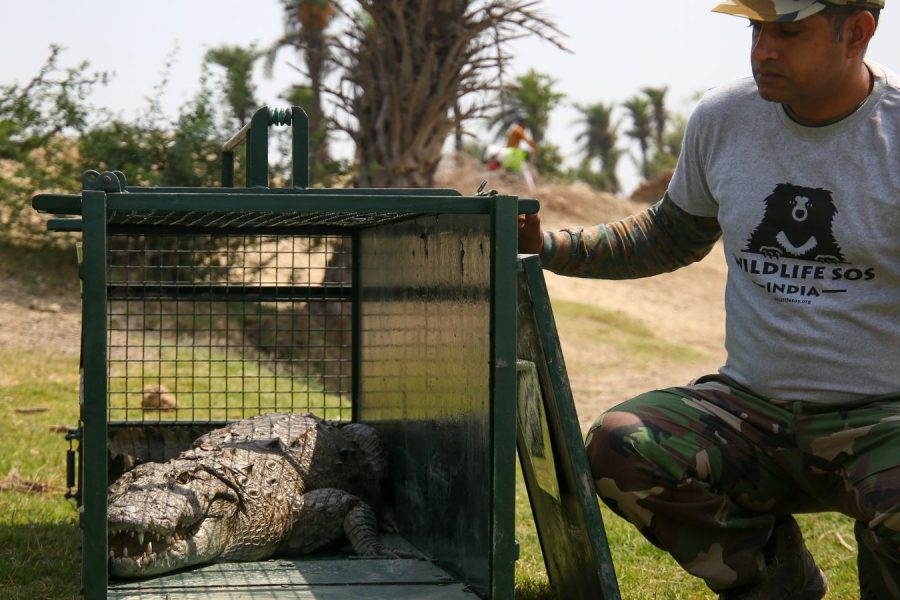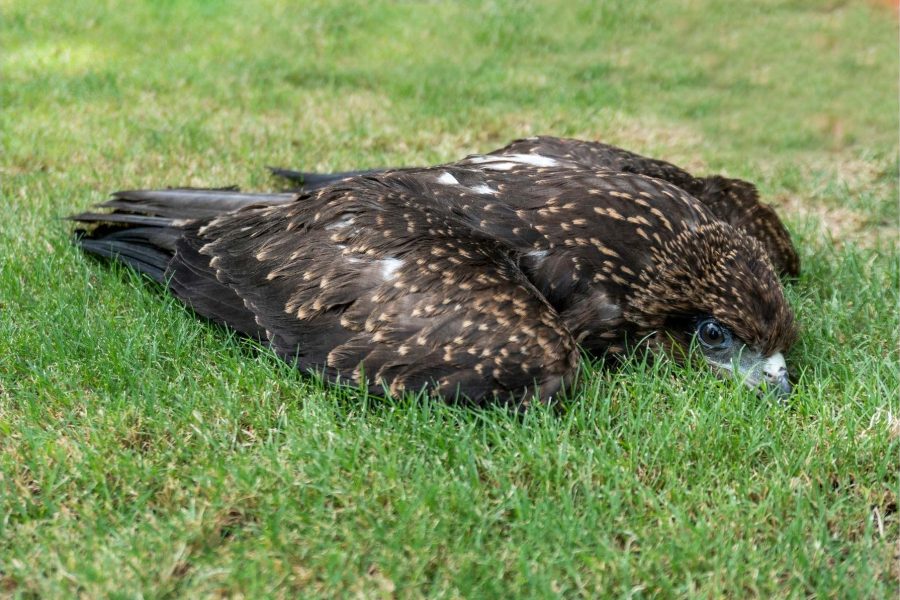“Who run(sic) the world? Girls!”
We couldn’t agree more with the words of legendary pop icon Beyonce. In a world ravaged by political and ecological turmoil, women are quickly finding their voice and rising to greater heights.
Amongst these voices, is that of Aaliya Mir, a powerhouse of conservation. Ms Mir has been associated with Wildlife SOS since 2002; she started out as a volunteer and then began undertaking diverse projects in her home state – Jammu and Kashmir. Today, Aaliya heads our conservation program in Jammu & Kashmir and she also fulfills the role of Education Officer and conducting awareness workshops is a major part of her job role. Most importantly, Ms Mir is a pro when it comes to handing human-reptile conflicts and says she is most fascinated by the snakes that she encounters on the job on a daily basis.
We had a chat with Aaliya as she sat in her home in Srinagar when we caught her in one of her rare free moments. Read on to get to know the face behind our highly nuanced program in J & K.
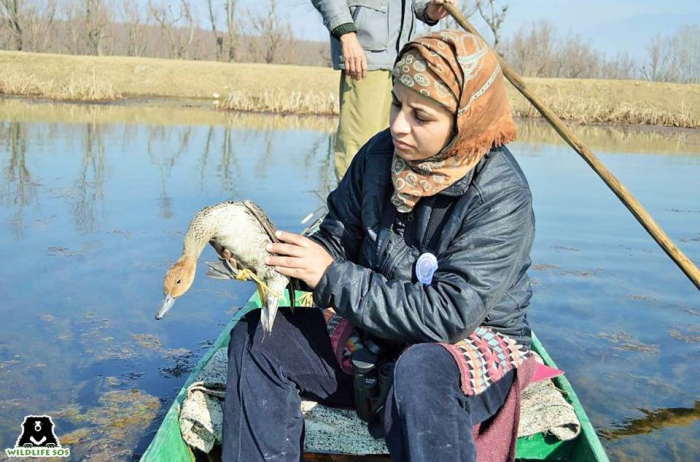
Q. Please tell us a little bit about yourself.
“I am from Srinagar where I was born and raised. I pursued my education from the same city leading to the completion of my Graduation in Science, another Graduation in Education and a Post-graduation in Mathematics. Subsequently I also obtained a diploma in Disaster Management with specific emphasis on animal health. After my marriage, I moved to Delhi where I met Kartick Satyanarayan and Geeta Seshamani, Co-founders of Wildlife SOS where I learnt all about the work that they were doing with wild animals.
In Delhi, at that time there was a horrific incident that made it to the news – a Black bear had ventured into a village. People panicked and it was chased by a mob armed with sticks and axes. Unfortunately, the situation escalated out of hand and it ended with the bear’s death due to heavy burn injuries. Armed with a burning desire to do something, I got involved with WSOS’ cause. My husband, who is also a Wildlife Veterinarian, was thrilled with my interest in this field.”
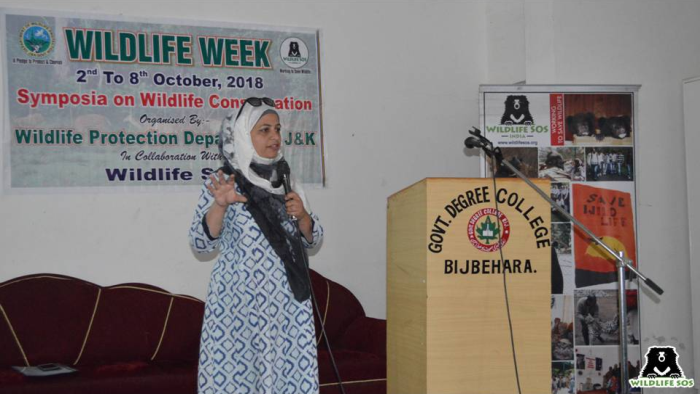
We ask Aaliya to tell us a bit about her personal life and what she does in her free time. She smiles and says, “What free time?”
“I am also a mother to two children and spend my free time (if I have any) on some pet projects and gardening.”
Q. Describe a regular day at work.
“My work at Wildlife SOS involves playing diverse roles, depending on the situation at hand. I normally spend my days shuttling between the WSOS Dachigam and Pahalgam Rescue Centres and different locations for rescues calls or awareness programs. “
“When I visit the centres, my day starts with a thorough check of all the inhabitants of our sanctuary. This could go on for hours because I conduct health assessments and an observation check to identify anomalies in the behaviour of the Brown and Black bears or their routines. Then I conduct one on one sessions with the animal care staff, note down their successes and challenges. Later, I interact with visitors to the centre, educating them about the work we do.
When I am conducting awareness programs or community workshops, I leave for the location early in the morning with my team. We reach the site and spend some time ensuring everything is set up properly before the attendees start arriving. These workshops include interacting with local communities, listening to their grievances, finding ways to address the issues and gather feedback. Our teams always make it a point to follow up to gauge the success rate of redressal methods. Feedback is the only way to ensure that the work we are doing is definitely helping people.
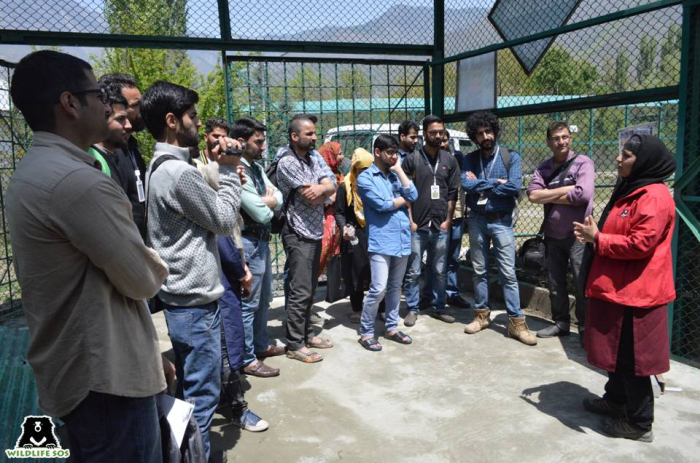
If we talk about conducting rescues, every rescue is a different case. The situation is often dynamic, changing with every passing moment. I answer calls up till late at night and I think that’s what made people rely on our helpline. We’re prompt in answering calls and we conduct rescues as quickly and efficiently as possible.”
Q. What’s your favourite part of the job?
“Everything…!”
“…But if I have to pick one, I’d have to say the rescues are my favorite part. To be able to attain the satisfaction of having saved a life from injuries or death – I can truly say I have never experienced anything better. I feel satisfied that I have tried my best to save the life of an animal from a situation which would most probably have caused it grievous harm.”
“I’ve mostly seen that snakes are the victim of a great deal of ignorance here. In fact, we were the first organization to initiate reptile rescues in J&K. It took us a while to build our credibility, but by 2014 we were getting regular calls for aid from people who encountered these critters in their homes. You will not believe that my team and I have attended to rescue calls in the middle of weddings, festivals, birthdays…you name it, we have done it.”
“Our work is doubly important because we want to educate people about the difference between venomous and non-venomous snakes. Moreover, we want them to understand that taking the life of that animal should not be a resort at all. There are other, better ways to handle and mitigate conflict. We know that we cannot save every single life, but even one entity saved from a brutal fate is a source of happiness.”
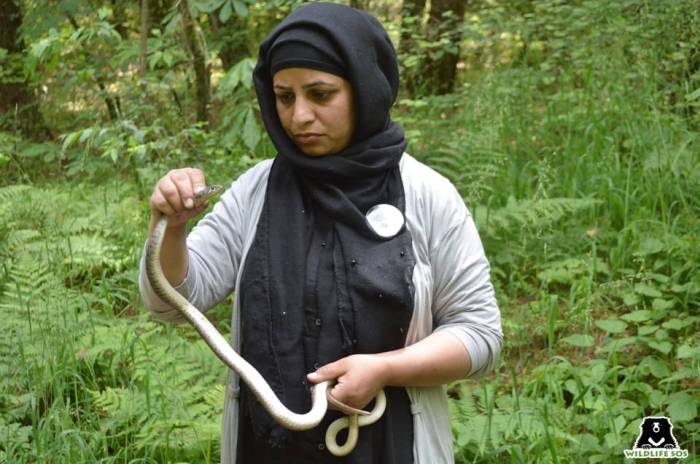
Q: Being a woman conservationist, you are breaking so many stereotypes. What are the challenges you face as a woman in conservation?
“Our society remains male-dominated to this day. This makes it difficult for any woman to move forward, especially in what everybody considers to be a job unsuitable for a woman. For example, working as a rescuer, I was often dismissed or belittled by people who did not believe that I could be up to the job. People used to say, ‘Ye kya kar payegi…Ye to aurat hay…‘ (What can she do…she’s, after all, a woman…) Even their body language made it evident that they did not take me seriously.”
But I had left such a line of thought a long way behind.
“Though there was a lot of pressure on me to succeed, I was determined to let nothing come in the way of my vision and continued to persevere against many similar odds. I was leading a team and it was imperative for me to perform well for even their sake. Today, we’re slowly gaining recognition for the work we have done and people, including enforcement agencies, have begun to trust us and rely on us. The media has proved quite instrumental in helping us change the way we women are perceived. Though we still have a long way to go, the journey has been encouraging so far and we hope to achieve great things moving forward.”
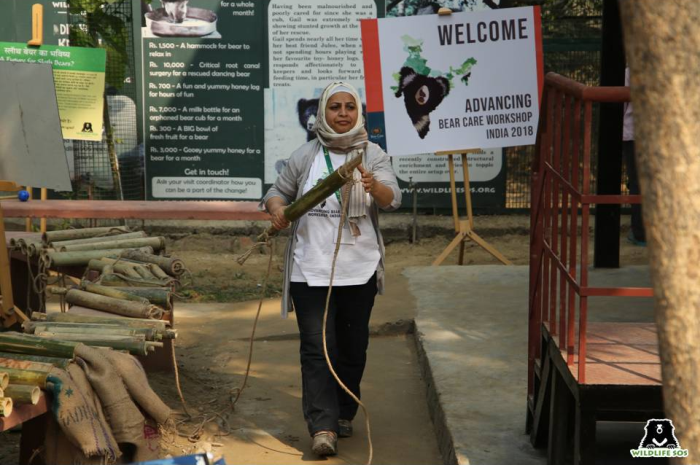
Q. We’ve all heard of the stereotypic trope of women finding it difficult to interact with snakes. A lot of your work involves reptiles and we know you love it.
How did you get started with them in the first place?
“Well, to be honest, I’ve always been fascinated by snakes. I used to work a teacher before my association with Wildlife SOS and quite enjoyed learning new things. As I’ve mentioned before, awareness about these reptiles is at a minimum in my state. During my rescue calls, I’ve often noticed that only those people who have directly encountered a snake are the ones who know that they share the landscape with these unique critters. Most of us aren’t even aware of their existence. This leads to many problems while dealing with wildlife – when there’s a lack of awareness about non-venomous and venomous species, conflict cases rise.
My fascination with reptiles started on my first ever snake rescue in 2014. We received a call of aid from a residence in Makhdhoom Sahib. An Eastern Cliff Racer had taken refuge in the walls of a home and the residents had come across our newly established helpline number. Subsequently, we received another call from a VIP lodge about a Trinket snake and another regarding a Levantine Viper from a home in Rajbagh. What surprised me the most about this was that while all the rescue calls were about different species, people did not have much information about any of them.That’s when I was convinced of the importance of awareness in mitigating conflict.”
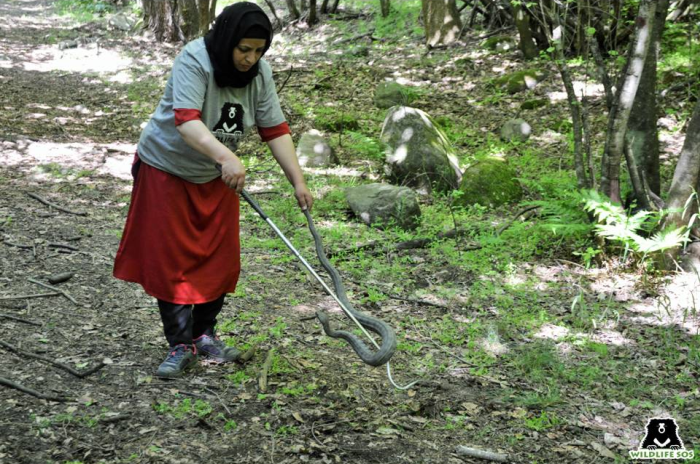
We ask her how she built the formidable reputation she holds today and how she learnt to do what she does best.
“There’s no competition to learning on the job. Practical experience is the best teacher and I’ve learnt everything on the go. I am very grateful to Wildlife SOS for giving me so many opportunities to expand my learning, just as much as my supportive family.”
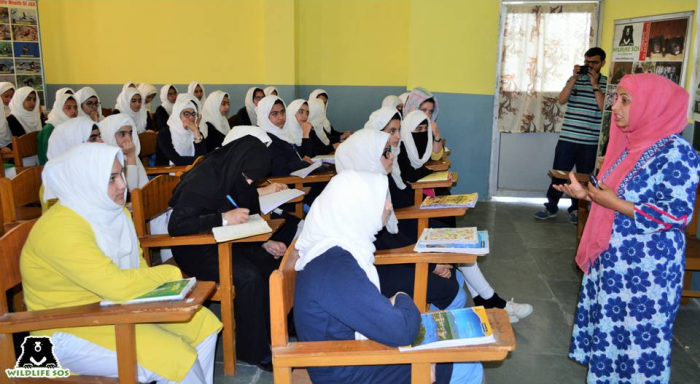
Q. What are the precautions you take for a rescue? Are they different for different species? What is the most important aspect of a rescue?
“Yes, every rescue is different. It depends on the animal we are rescuing. Reptile rescues require minimal equipment and staff – but a high degree of vigilance and utmost caution. For rescues involving larger animals such as bears or leopards, we have to gear up with a larger team. The medical equipment also becomes more detailed and sophisticated. Larger numbers of rescuers help us in crowd control, tackle mobs and while the Vet tranquilizes the animals and perform detailed tests and treatment for them. As for the most important aspect of a rescue, it is proper protective gear, without which we cannot perform ant rescue with half the precision as we do now.”
Q. What’s been the most memorable experience you have had so far?
“There are too many to count. Every day I get to experience life with India’s wildlife which is a blessing for me. I forget everything when I interact with animals. Some of my favorite moments include interactions with bear cubs – they really make me feel like I am a part of so much more in this world. The intelligence of the animals to share our landscape astounds me to no end. The more I observe these animals, the more I am stunned with the level of intellect displayed by them on a day to day basis. That has to be my favourite part of the job – the ability to be able to experience so many new things every time I encounter a wild animal.
Another incident that comes to mind is one of the first rescues I conducted – that of a trinket snake. Due to certain reasons, we were unable to release the snake into its natural habitat. I provided temporary shelter to the snake by creating a nest for it to rest comfortably. The next day, I opened the basket to find ten eggs that it had laid through the night! The whole experience was quite immense, unforgettable in every way.”
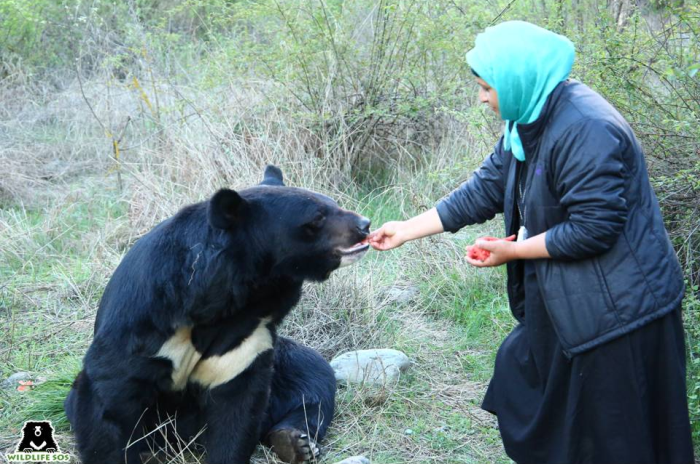
Q. What is the state of J&K’s wildlife and the human-animal conflict that results from it? What can we do on our part to mitigate conflict?
“In Jammu & Kashmir, conflict basically arises from interactions with these animals – bears, leopards, porcupines, snakes and lately from wolves and wild boars. There are so many reasons for increasing conflict – habitat destruction and change in land use patterns the most important of these factors.”
“If we want to start mitigating conflict, the first thing to do is plant trees and increase the forest cover. Only when a forest is healthy and the prey base for wild animals is intact, we can expect conflict to reduce. Wild animals really do not prefer to enter human settlements, but a lack of resources in their native habitat forces them to do so. If their home is healthy and secure, we will see less of them in our homes.
Our land use patterns are also changing – from planting paddy specifically, we are now practicing multi-cropping. We grow maize, paddy and fruit trees in our farms – which are a great food source for wild animals, especially bears. 70-80% of the conflict cases we have come across emerge in agricultural fields. During our awareness drives, when we visit these fields, we have to take precautions like making loud sounds to alert the animal to our presence.
There’s another precaution we should be applying regularly – efficient waste disposal. Improper waste disposal methods lead to conditioning of the wild animal as it makes them more dependent on us. Living in forest fringes is always challenging, but when we leave our waste out in the open, we encourage the surrounding wildlife to visit these open garbage bins. Since bears have a sense of smell 2000 times stronger than humans, and they can smell rotting waste from miles away, they come for any food which is left outside the premises. Another step we can take is install proper lighting in and around our homes.”
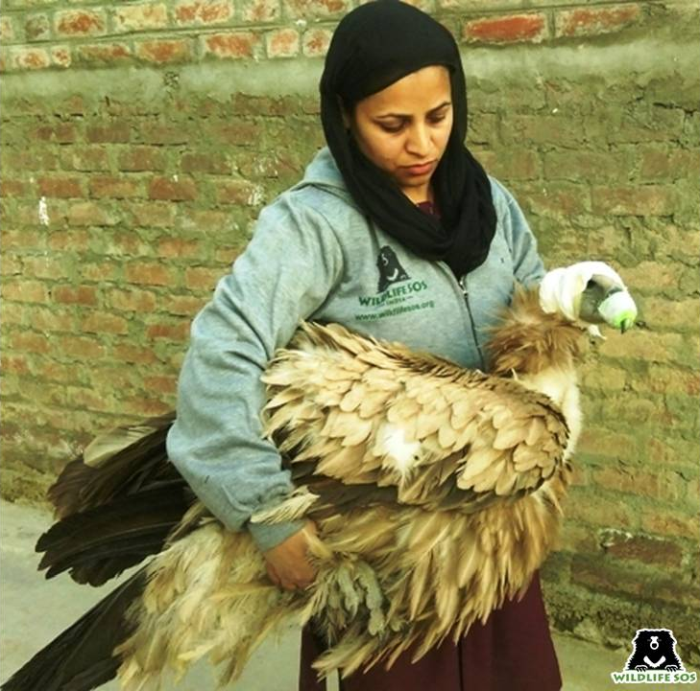
Q. Is there anything you’d like to share with us? Do you have a message for those reading this article?
“Be kind!
Animals are unique, beautiful and an intricate part of this world. It is important to understand that we need them more than they need us. They are an important link in our ecological system and their presence helps us sustain this balance. In this era, we have so much to learn from these animals. I always incorporate this message in my awareness workshops too – learn from these animals and give them space; they need it much more than us. I believe even a microbe has purpose in the world; nothing is useless so we should respect every living being.
I am pained when we even cut trees, these are walking, talking life forms and we should protect them!

